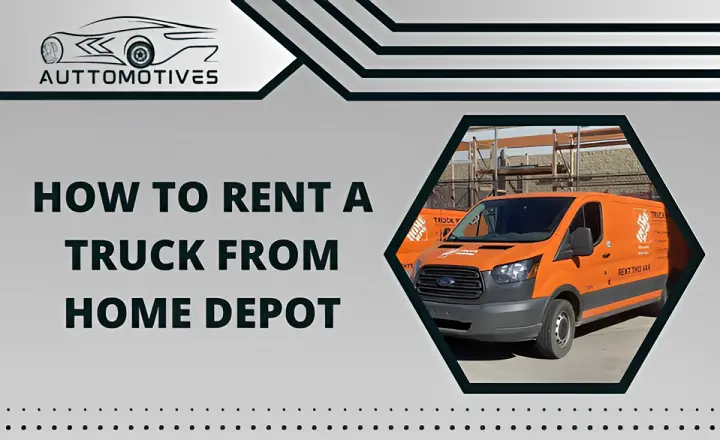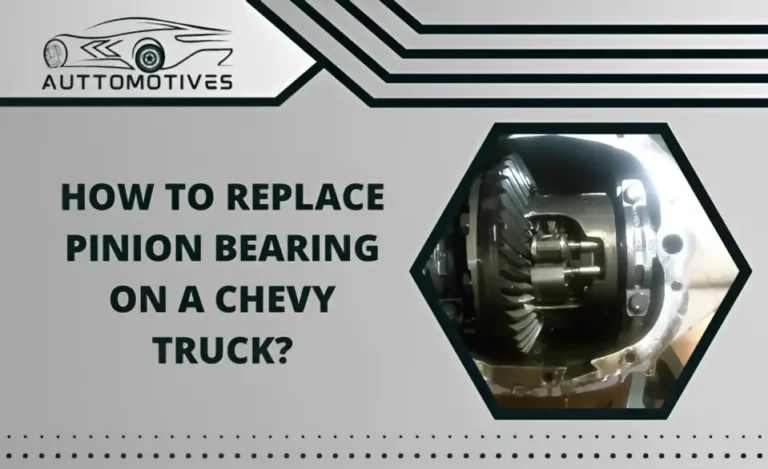How Much to Paint a Truck | A Detail Costing Guide
Painting a truck can give it a fresh look and extend its lifespan. In this article, we will provide a detailed costing guide to help you determine How Much to Paint a Truck. Before diving into the project, it’s essential to understand the cost of painting a truck. The cost of painting a truck can vary greatly depending on several factors, such as size, type of paint used, and whether you decide to do it yourself or hire professionals.
We will cover all aspects of the process, from material costs to labor fees, so you can decide whether painting your truck is worth the investment. So let’s get started!
How Much to Paint a Truck?

Painting a truck can be a cost-effective way to breathe new life into an old vehicle. But before you begin the process, a budget is essential. The cost of painting a truck can vary greatly depending on factors such as the size of the vehicle, the quality of paint used, and whether or not rust needs to be removed before painting.
DIY options are available for painting a truck for those on a total budget. Remember that professional-grade results may not be achievable without experience and specialized equipment.
One option is using spray cans of paint specifically designed for automotive use. While this method is relatively cheap and easy to do yourself, it may not provide long-lasting or high-quality results. The cost of painting a truck also varies on the size or weight of the truck.
If you want a more professional finish for your painted truck, hiring a professional painter with experience with automotive painting techniques is best. While some opt for showroom-grade paint jobs that cost upwards of $20,000, others are searching for more affordable options that still provide a professional finish.
One such option is a cheap but professional paint job. These paint jobs are generally performed by experienced painters who use high-quality paints and techniques to achieve a clean and polished look on the truck’s exterior. While they may not include all the bells and whistles of a full-body painting service, they can still make a significant difference in the vehicle’s appearance.
Another option for truck owners looking to spruce up their ride is extensive body painting. This type of service involves repairing any dents or scratches on the truck’s body before applying new coats of paint.
Decent paint requires affordable truck painting services that offer reasonable prices. With most estimates ranging from $300 to $1,000, you can have your truck looking brand new without breaking the bank.
Repainting your truck is essential if you plan on reselling it. A new coat of paint can make all the difference in increasing its value and appeal to potential buyers. Finding an affordable and reliable painting service should be at the top of your list before putting your vehicle up for sale.
Investing in a good quality paint job enhances your truck’s appearance and protects against rust and other types of damage caused by exposure to harsh weather conditions. Don’t let high prices deter you from giving your vehicle the makeover it deserves.
The expense of painting your truck:

As a truck owner, you understand that painting your vehicle is expensive or How Much to Paint a Truck. Therefore, it’s essential to consider all the factors contributing to the quality of your paint job before embarking on this process. One of these factors is ensuring a climate-controlled booth for painting your truck. The temperature and humidity in the booth should be carefully regulated because fluctuations can affect the paint’s adhesion and drying time.
Another factor to consider when preparing your garage for painting is adequate ventilation. You need to ensure that proper air exchange systems are in place to prevent fumes from accumulating and posing health risks. A well-ventilated garage also helps maintain the ideal temperature and humidity levels, preventing dust particles from settling on wet surfaces.
Use bug repellents like DEET or Citronella sprays to protect yourself against bugs while working in an open area. Look at a few more factors that will help paint a truck.
- Paint
- Masking tape
- Foam brushes
- Sandpaper
- Paint trays
- Solvent
- Filtered Mask
Paint:
One factor that can significantly influence cost is the type of paint you choose. High-quality paints will generally have a higher price tag than cheaper options, but they may also last longer and provide better protection against weather and other environmental factors. The color you choose can also impact cost – metallic or custom colors may be pricier than primary colors like white or black.
Masking tape:
One of the benefits of masking tape is that it prevents overspray from ruining areas you don’t want to be painted. You can easily cover windows, trim pieces, and other areas with careful application. The masking tape allows for precision when creating designs or stripes on your vehicle.
Another advantage of masking tape is that it saves time in the painting process. You won’t have to spend hours carefully hand-painting each section because the tape will protect those areas.
Foam brushes:
Foam brushes are becoming increasingly popular among DIY enthusiasts for painting their trucks. They’re easy to use and provide a smooth finish with minimal brush marks. The best part is that they’re incredibly cheap compared to traditional paintbrushes or sprayers, making them an ideal option for those on a tight budget.
Another advantage of using foam brushes is their flexibility in terms of the type of paint they can be used with. Whether it’s latex or oil-based paint, foam brushes work well with both and produce great results.
Sandpaper:
When painting a truck, sandpaper can save money by eliminating the need for expensive professional services. By purchasing sandpaper and taking the time to prepare the surface of your truck before painting correctly, you can achieve professional results on your own without breaking the bank. In addition to being cost-effective, sandpaper allows for better adhesion between paint layers, resulting in a longer-lasting finish.
Paint trays:
Using a high-quality paint tray ensures consistent coverage throughout your project. Using a tray means less waste since controlling how much paint you use on each pass is easier. The right type of tray also makes it easier to clean up after your job is done. Some trays are disposable and can be tossed in the trash once they’re no longer needed, while others are washable and reusable for future projects.
Overall, investing in a good quality paint tray can help reduce expenses associated with truck painting in the long run by saving time and money.
Solvent:
Solvents are critical in truck painting as they help clean the vehicle’s surface before applying paint. Several types of solvents are available, but choosing the right one can determine how well your paint job turns out. For example, if you’re looking for an affordable option that provides excellent results, you may want to consider using mineral spirits or turpentine. These solvents work well with oil-based paints, allowing them to spread evenly across the surface without leaving any streaks or brush marks.
Filtered Mask:
The filters in these masks are specially designed to capture harmful airborne particles such as dust, dirt, and paint overspray. They also filter out volatile organic compounds (VOCs) and other hazardous chemicals released during painting. Without proper protection, these dangerous elements can cause severe respiratory problems or long-term damage to internal organs.
Using a filtered mask for truck painting provides safety and enhances the quality of work done by painters. When they wear protective gear like this, they can breathe easily without worrying about airborne contaminants or toxic fumes affecting their work.
Conclusions: How Much to Paint a Truck
Painting a truck can be a costly and time-consuming process. The total cost will depend on multiple factors, such as the paint type, labor costs, and the extent of the work needed. Getting estimates from different shops or contractors before starting the project is vital to ensure you are getting a fair price. Considering the long-term benefits of investing in a high-quality paint job that will protect your vehicle and increase its resale value is essential.
With proper research and budgeting, you can achieve a beautiful and durable paint job for your truck that will last years. So take the first step towards enhancing your truck’s appearance by getting an accurate cost estimate today! After painting your truck accurately, you can start your business with trucks like a food truck with no money or a Walmart truck.
FAQs
How much does it cost to paint a whole truck?
The cost of painting a truck can vary greatly depending on the truck’s size, the type of paint used, and any additional detailing. Generally speaking, you can expect to pay anywhere from $500 to $2,500 for a primary paint job. If you are looking for more detailed work, such as custom designs or airbrushing, it could cost upwards of $5,000. Ultimately, it is essential to shop around and compare prices before deciding.
How much paint does it take to paint a truck?
The amount of paint needed to paint a truck can vary greatly depending on the truck’s size and the type of paint being used. Generally, you should use around 1 gallon of paint for every 10-15 square feet of surface area. A full-size pickup truck would require about 3-4 gallons of paint. If you use high-quality paint, you may need more than this amount. If you paint intricate details or add graphics, you may need additional supplies like masking tape and stencils.
How much does it cost to paint a truck chassis?
The cost of painting a truck chassis will depend on the truck’s size and the type of paint used. Generally, you can expect to pay between $500 and $2,000 for a complete paint job on a truck chassis. It is important to note that this cost does not include any additional bodywork or repairs that may need to be done before painting. If you want a high-quality finish, you may need to pay extra for higher-grade paints and materials.
What is the best paint for repainting a truck?
Whatever paint you choose, prep the surface properly before applying any new coatings. This includes sanding down the existing paint and priming the surface so that the new paint will adhere correctly.







